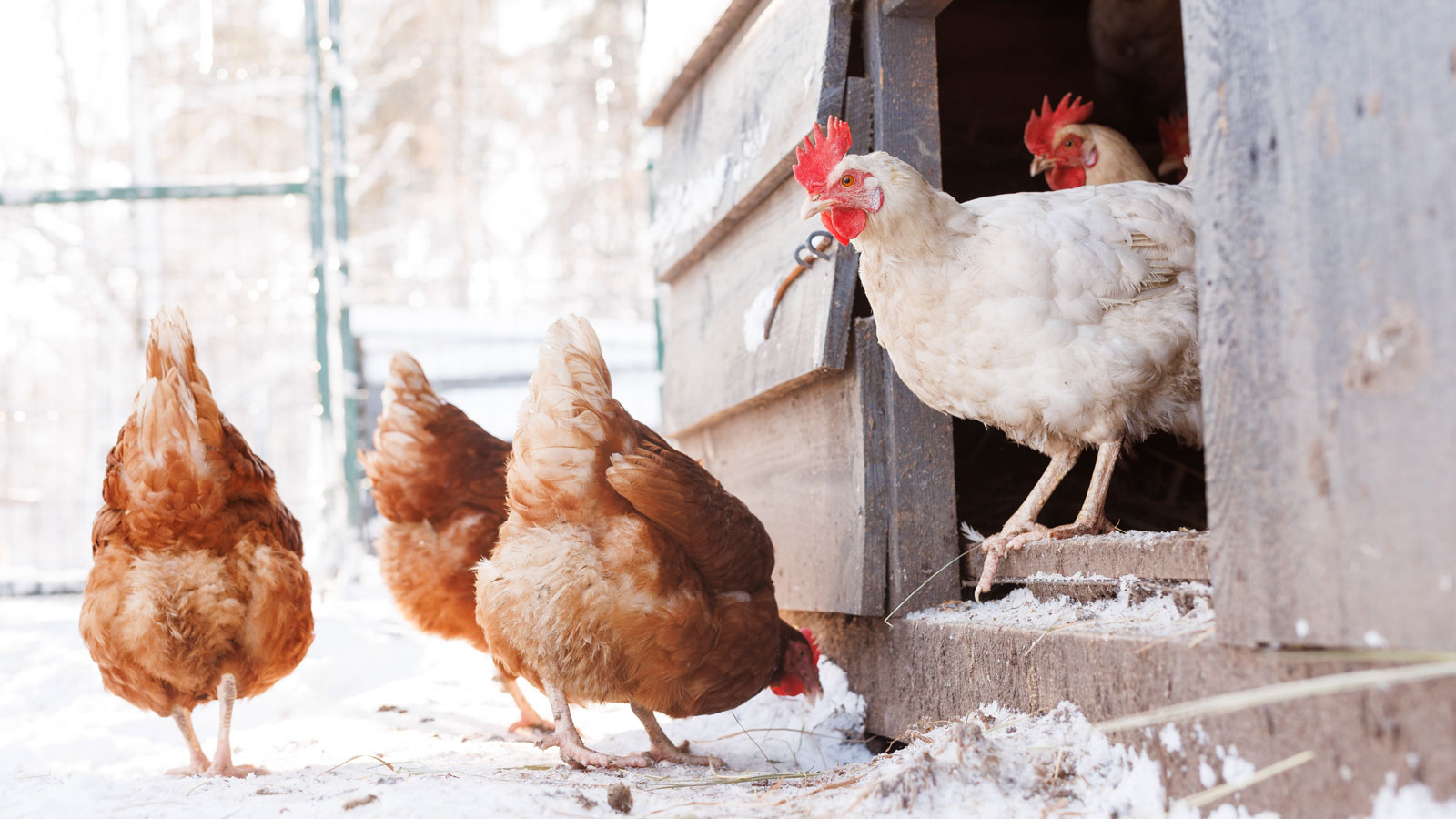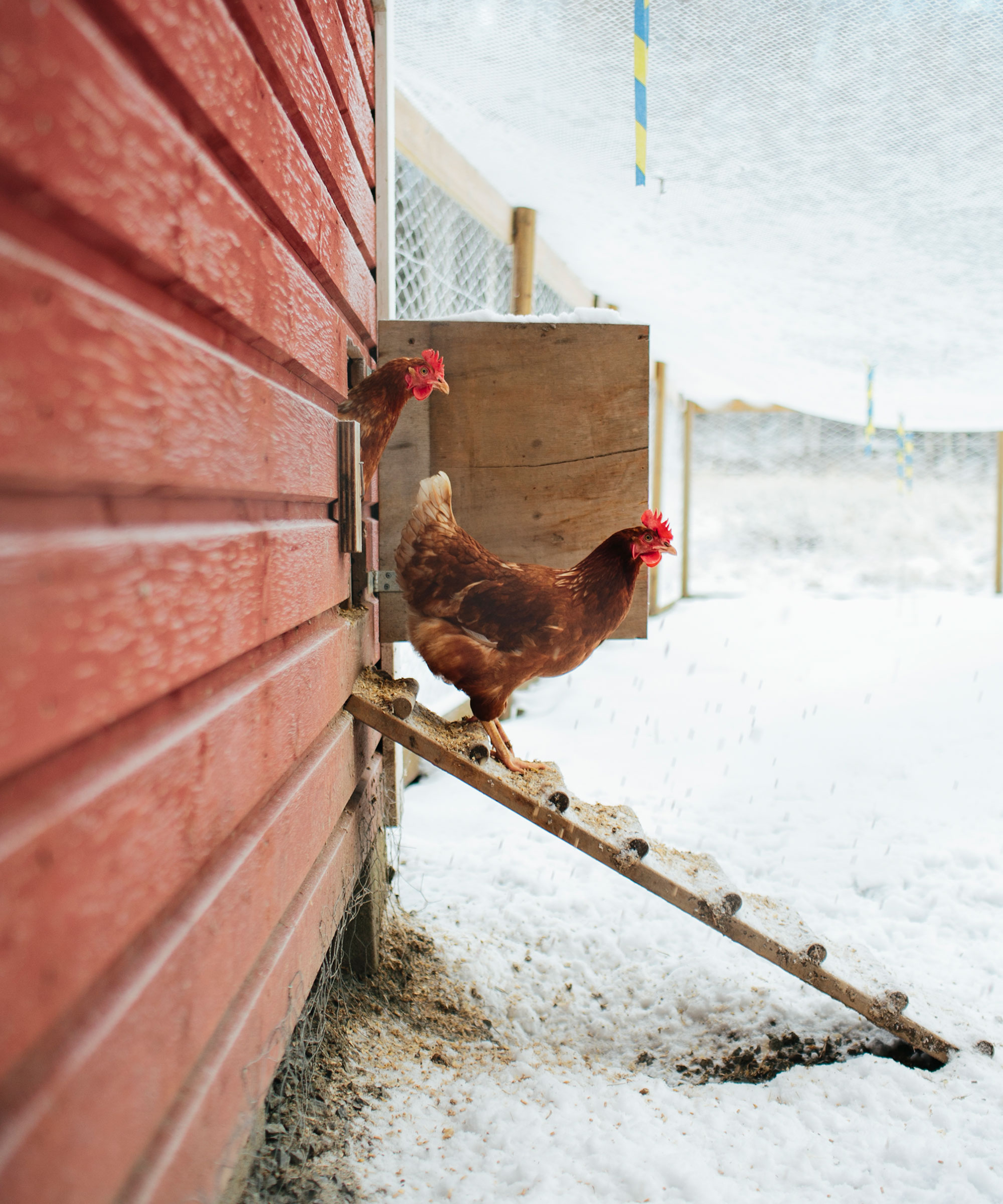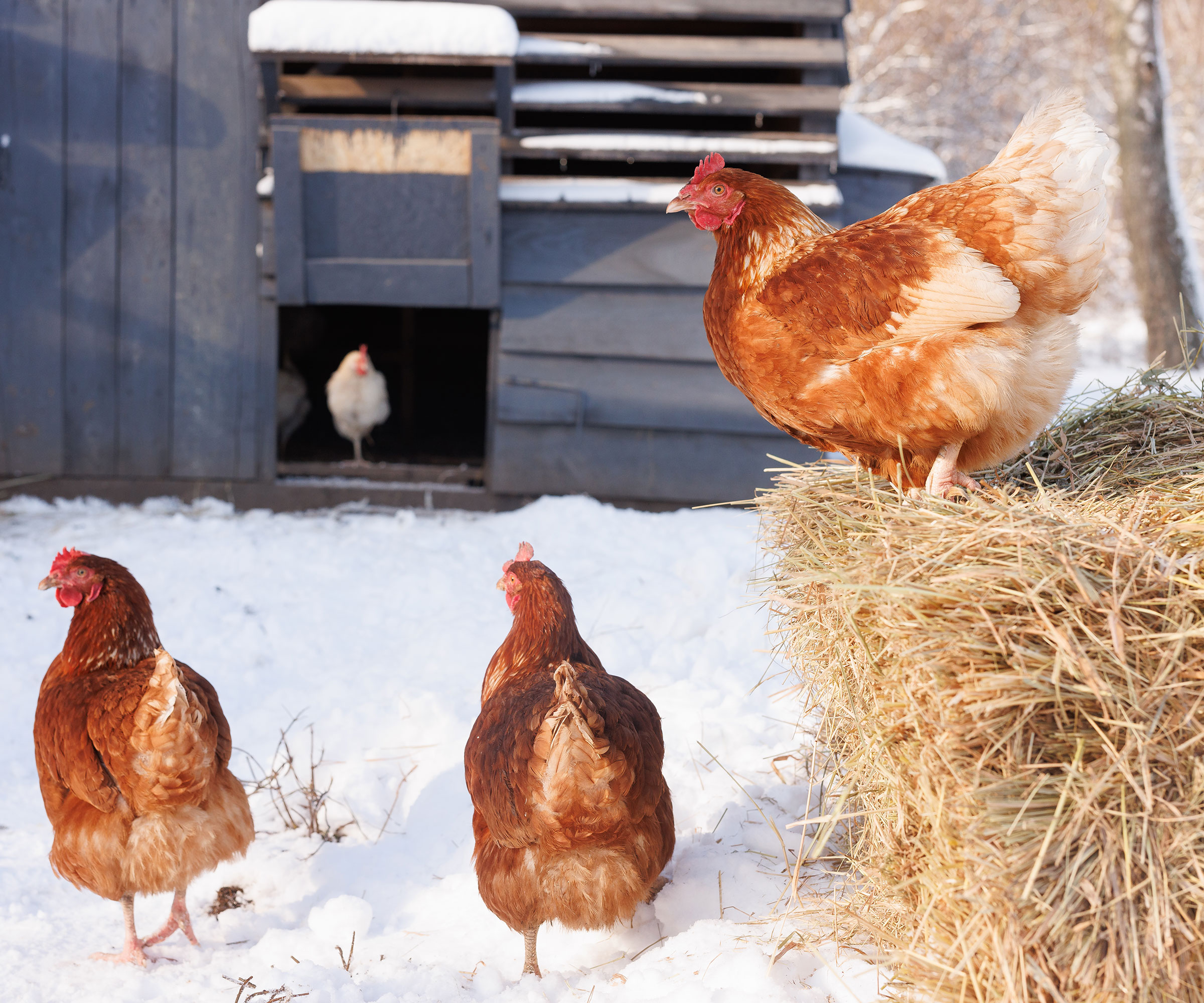Winterizing Chicken Coop Pens And Boxes: 5 Steps To Keep Chickens Safe & Warm
Winterizing chicken coop pens and boxes is a crucial way to keep your chickens safe and warm in the cold season. Follow our five steps for happier, healthier chucks


Winter may be a quiet time in many parts of our gardens, but anyone keeping chickens will know that they are still very active and vocal in the chilly months. A large part of keeping chickens for their glorious free-range eggs is winterizing chicken coop environs. The winterized chicken coop must keep the chickens warm but also ensure ventilation.
So alongside plant overwintering, make time to keep chucks healthy by winterizing chicken coops. If you are a new bird keeper, this may seem daunting, but as the years go by, chicken coop winter maintenance will become a habit. With unfrozen water, fresh feed and bedding, insulation and a heat source, your chickens will not only survive winter, but thrive to begin laying anew in the warmer season. For anyone looking to care for backyard garden chickens all year round, this is your one-stop action plan on how to winterize a chicken coop in five easy steps.

1. Check Insulation
When it comes to winterization of the coop, the big thing that stands out is keeping the enclosure warm in a chicken coop for the winter. Yes, freeze damage is far from being just a plant concern. Many opt to simply tarp the enclosure, but care needs to be taken to have some fresh air intake. This will reduce the amount of ammonia from the droppings and prevent excess humidity which can actually contribute to frostbite danger. Installing insulation in the walls is an excellent way to preserve the interior warmth. You should also insulate the floor with a thick layer of pine shavings or straw. Aim for 6-12 inches (15-30 cm) of this organic layer. This will protect the chicken’s feet from frostbite and help insulate the whole space.
2. Sort out Heating
Hanging brood or heat lamps from the rafters is a great way to provide heat. The average chicken will produce as much heat as a 60-watt bulb, but even one lamp can help keep a larger coop warmer. For those of you that might be concerned about attracting unwanted mice or rats, don’t panic. Hang the lamp with chain or wire to prevent rodents from chewing through rope and causing the lamp to fall on the dried bedding. Lights left on for 12-14 hours can also stimulate egg production which typically slows or stops in winter. Make sure you check daily for eggs since they are mostly water and can freeze.

3. Install Roosting Bars
When beginning to learn how to winterize a chicken coop, don’t forget roosting bars. These play an important part in allowing the chicken to get off its feet. This can help prevent frostbite. Each chicken needs 9-12 inches (21-30cm) of individual roosting space. Use wood to make the bars as it will not retain cold. The bars should be 1-2 inches (2.5-5cm) wide. This will allow the chickens to grip the bars with their toes.
4. Monitor Watering
In winter, the water provided will inevitably freeze. You may already keep an eye on the water in garden bird baths, but some of the same principles apply to chickens. Change the water several times per day. When winterizing a chicken coop, you may also purchase an electric or solar water dish. Be cautious when using electrical items in the coop. The dry bedding creates a perfect scenario for fire. Keep the water elevated to prevent the chickens from scratching food and bedding into the liquid.
5. Stay on Top of Feeding
Chickens may eat more in the winter than at other times. They must also have supplemental feed if they are generally free-feeding. You may also be savvy with natural chicken feed options, but be sure to select a good chicken chow and allow them free access. Give them some scratching grains and grit to help them digest. Chickens may eat up to 25 percent more food in the winter, so it's important that they have a ready and consistent supply.
Sign up for the Gardening Know How newsletter today and receive a free copy of our e-book "How to Grow Delicious Tomatoes".

Frequently Asked Questions
Can you have a chicken coop in the winter?
In even the coldest climates, chickens can survive freezing temperatures. There are a few breeds that are very well adapted to cold. If you keep chickens in the north, consider Wyandotte, Plymouth Red, Orpington or Ameraucana. These are heavier birds that do well in cold situations. Watch birds for cold stress. If they tuck a foot up into their breasts or remain puffed up, they are not warm enough.
What temperature is too cold for chickens at night?
Most chickens will do well in temperatures of 0 degrees Fahrenheit (-18°C). However, when temperatures plunge to -20°F (-29°C) frostbite and other dangers can occur.
What do you put on the floor of a chicken coop in the winter?
A layer of insulating bedding is necessary for the chicken coop in winter. Straw or wood shavings are good choices. Make sure to clean and remove soiled bedding as it occurs. Chicken droppings are 70 percent water. This will increase the humidity in the coop which can lead to frostbite. Consider putting trays under the roosts for easy cleanup.
Should I close my chicken coop in the winter?
Chicken coops must have some ventilation even in winter. Do not try to close up every chink and hole. If you insulate or use a tarp, make sure there is a small area for fresh air to enter. This area should be on the lee side, away from wind and drafts.

Bonnie Grant is a professional landscaper with a Certification in Urban Gardening. She has been gardening and writing for 15 years. A former professional chef, she has a passion for edible landscaping.